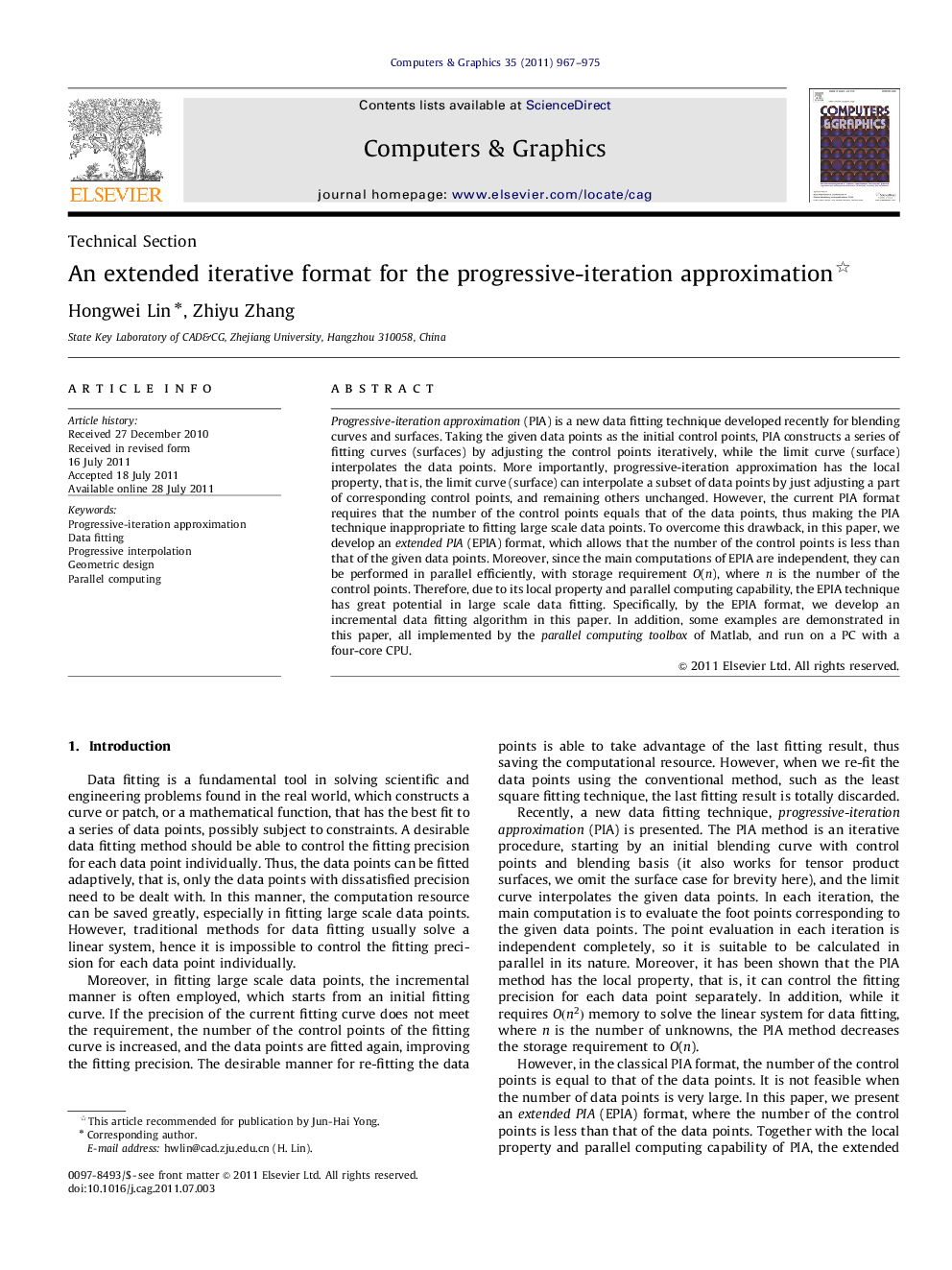| Article ID | Journal | Published Year | Pages | File Type |
|---|---|---|---|---|
| 441594 | Computers & Graphics | 2011 | 9 Pages |
Progressive-iteration approximation (PIA) is a new data fitting technique developed recently for blending curves and surfaces. Taking the given data points as the initial control points, PIA constructs a series of fitting curves (surfaces) by adjusting the control points iteratively, while the limit curve (surface) interpolates the data points. More importantly, progressive-iteration approximation has the local property, that is, the limit curve (surface) can interpolate a subset of data points by just adjusting a part of corresponding control points, and remaining others unchanged. However, the current PIA format requires that the number of the control points equals that of the data points, thus making the PIA technique inappropriate to fitting large scale data points. To overcome this drawback, in this paper, we develop an extended PIA (EPIA) format, which allows that the number of the control points is less than that of the given data points. Moreover, since the main computations of EPIA are independent, they can be performed in parallel efficiently, with storage requirement O(n), where n is the number of the control points. Therefore, due to its local property and parallel computing capability, the EPIA technique has great potential in large scale data fitting. Specifically, by the EPIA format, we develop an incremental data fitting algorithm in this paper. In addition, some examples are demonstrated in this paper, all implemented by the parallel computing toolbox of Matlab, and run on a PC with a four-core CPU.
Graphical abstractThe incremental data fitting method by the EPIA format starts the new fitting procedure from the last fitting result after knot adjustment. The fitting curve is in red, and the control polygon is in blue. (a) The data points. (b) Initial curve. (c) After 15 iterations. (d) After knot insertion. (e) After 50 iterations. (f) After 70 iterations. (g) The final fitting curve after 70 iterations.Figure optionsDownload full-size imageDownload high-quality image (87 K)Download as PowerPoint slideHighlights► The EPIA format can fit the data points adaptively; especially, it allows the fitting curve (patch) to interpolate some prescribed data points. ► The incremental data fitting algorithm by the EPIA format starts the new fitting procedure from the last fitting result after knot adjustment. ► In the EPIA format, the number of control points for the fitting curve (patch) is less than that of the data points. ► The EPIA format can be implemented in parallel. ► The memory requirement of EPIA is O(n), where n is the number of the unknown control points, while the memory requirement for solving a system of equations for data fitting is O(n2).
